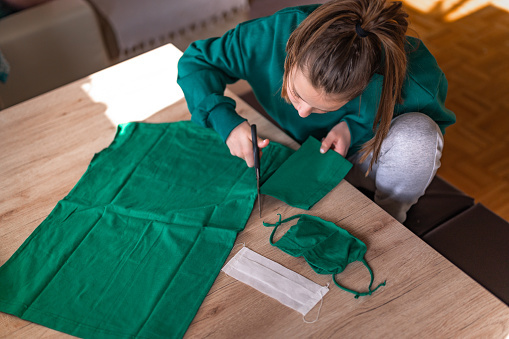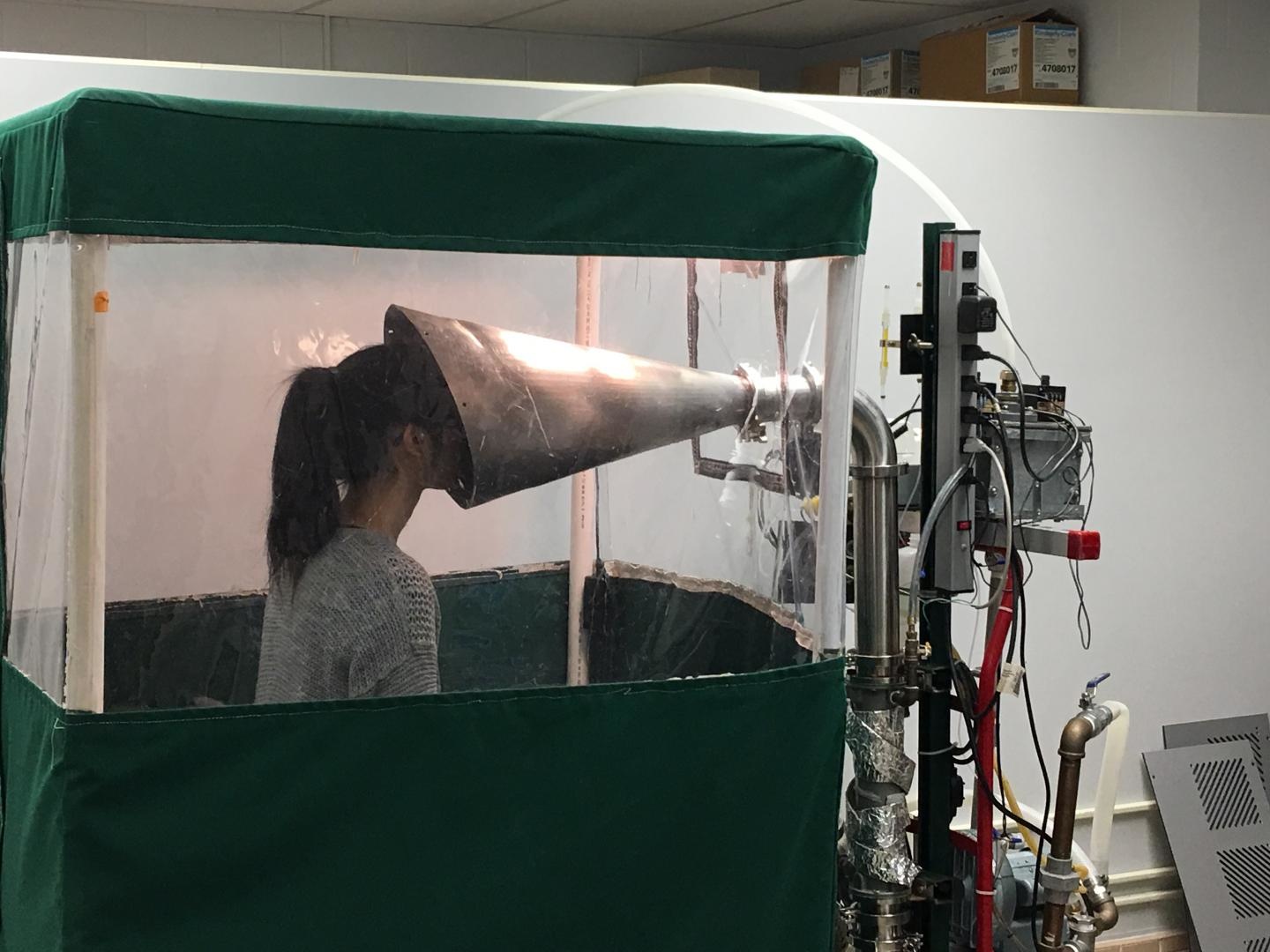Cotton masks outperform synthetic fibers in humidity test

Photo: Tierney / Adobe Stock
- In a new study, filtration efficiency increased by 33 percent with cotton fabrics.
- Nine different types of cotton flannel were tested, with efficacy rates ranging from 12-45 percent better than synthetic fibers.
- Nylon, rayon, and polyester all performed much worse than the cotton counterparts.
A year into the pandemic and we’ve never gained clarity around masks. Of course, we know wearing one is somewhere between somewhat and very effective at stopping the spread of viruses. The efficacy of different materials and fits has been constantly debated. For those who cannot secure N95 masks, the dizzying range of options and price points can be paralyzing.
A recent study, published in ACS Applied Nano Materials, investigated the durability of cloth and synthetic masks in environments meant to mimic the humidity generated by breathing. The researchers found that filtration efficiency (how well each material captures particles) increased by 33 percent with cotton fabrics.
Scientists from the National Institute of Standards and Technology (NIST) and the Smithsonian’s Museum Conservation Institute found that because cotton is hydrophilic—it likes water—this fabric performs better in moist environments. By contrast, water-hating (hydrophobic) synthetic fabrics don’t absorb moisture, making them less efficient at blocking virus particles.
The team tested swatches instead of masks. The first set of dual-layer fabrics were placed in an environment with 99 percent humidity; the second set, 55 percent. Once the fabrics were accustomed to the humidity, a pipe blew salt particle-rich air at the same velocity of exhalation in order to mimic the actual output of a human, as per CDC mask-testing guidelines.

Electron microscope images of cotton flannel (L) and polyester (R). Cotton fibers absorb moisture from breath, which increases filtration.Credit: E.P. Vicenzi/Smithsonian’s Museum Conservation Institute and NIST
Nine different types of cotton flannel were tested, with efficacy rates ranging from 12 percent to 45 percent better than synthetic fibers for an average of 33 percent. Nylon, rayon, and polyester all performed much worse than the cotton counterparts.
The researchers recognize that lab conditions are not real life. They also note that masks should not get wet. This study focused on real-world breathing conditions, not strenuous activities that would create more moisture. Still, NIST researcher Christopher Zangmeister was pleased with the results, noting,
“Cotton fabrics are still a great choice. But this new study shows that cotton fabrics actually perform better in masks than we thought.”

An employee shows a surgical mask at a leather workshop turned into a mask factory, close to Vigevano, Lombardy, on March 19, 2020.Credit: Miguel Medina / AFP via Getty Images
This news is especially important given the current political climate, with states like Texas and Mississippi lifting mask mandates, setting up difficult situations for business owners that will continue to require masks in their stores and restaurants. For example, 70 percent of Houston restaurants plan to continue enforcing masks while officials in Austin are requiring mask-wearing in public.
Dr. Mark Escott, the Interim Medical Director and Health Authority for the City of Austin and Travis County, explains why the regional mandate is important.
“Wearing a face covering is one of the easiest ways to slow the transmission of disease in our community. While vaccine administration is underway, we are still not in a place of herd immunity and need people to wear face coverings in public and around non-household members so we can avoid another surge of cases.”
CDC guidelines suggest finding the right fit and, if you’re not using N95 masks, to double mask—a good alternative when using cotton masks. Humidity might play a factor in their efficacy, but two layers of protection are certainly better than one—and way better than none.
—
Stay in touch with Derek on Twitter and Facebook. His most recent book is “Hero’s Dose: The Case For Psychedelics in Ritual and Therapy.”





